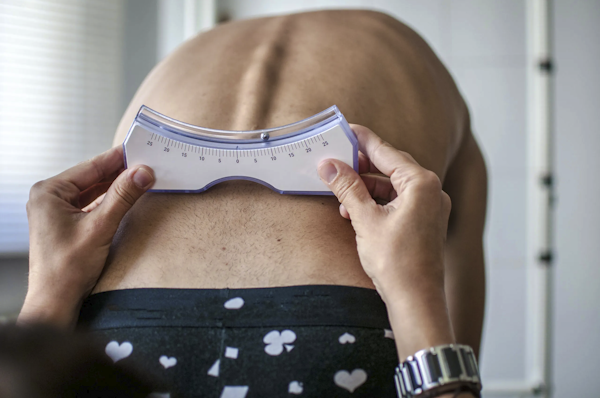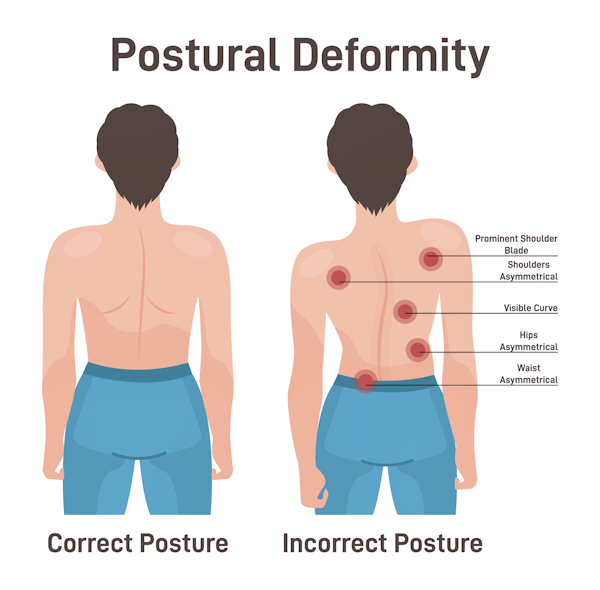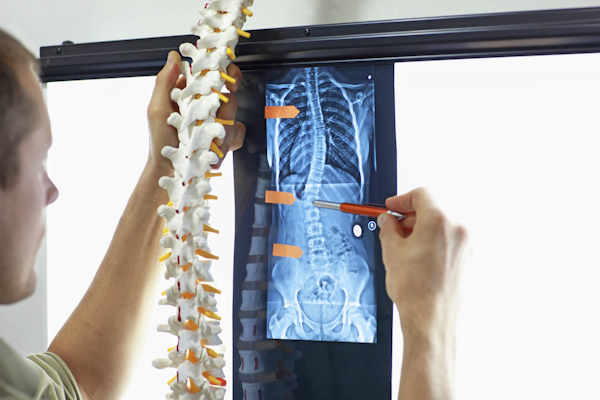HOW TO IDENTIFY SCOLIOSIS

Scoliosis can be identified by a postural exam and by specific clinical tests that are easy to administer, such as a forward bending test. Forward bending test provides clinical way to measure spinal rotation and can be done in sitting or standing using Scoliometer tool.
POSTURAL SIGNS OF SCOLIOSIS:
- One shoulder blade may appear higher or more prominent than the other.
- The waistline may appear deeper on one side.
- The pelvis may appear shifted or higher on one side.
- There is excessive leaning to one side at the trunk or neck.
- The ribs appear uneven in front of the body or while bending forward.
- An excessive tendency to slouch.


The diagnosis can be confirmed by radiological studies, such as a spinal x-ray.
Want to schedule a consultation? I would be happy to get in touch!